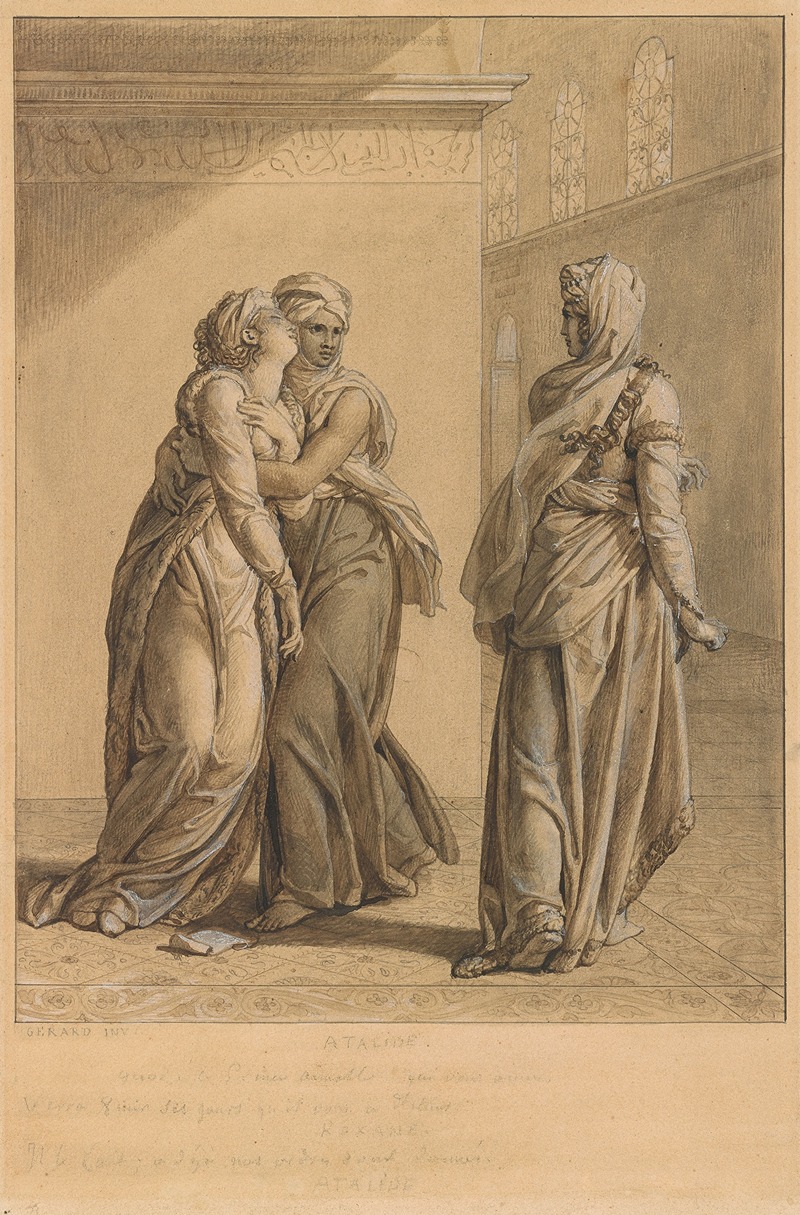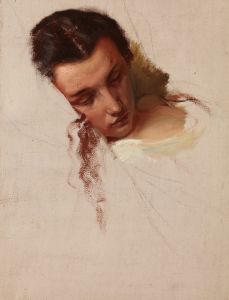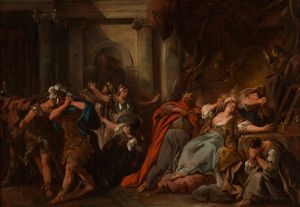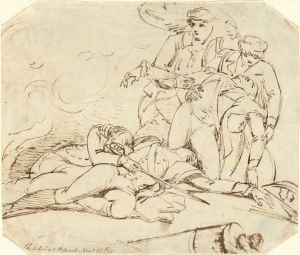
‘Je me meurs’; Atalide Faints upon Hearing Bajazet’s Fate
A hand-painted replica of François Gérard’s masterpiece ‘Je me meurs’; Atalide Faints upon Hearing Bajazet’s Fate, meticulously crafted by professional artists to capture the true essence of the original. Each piece is created with museum-quality canvas and rare mineral pigments, carefully painted by experienced artists with delicate brushstrokes and rich, layered colors to perfectly recreate the texture of the original artwork. Unlike machine-printed reproductions, this hand-painted version brings the painting to life, infused with the artist’s emotions and skill in every stroke. Whether for personal collection or home decoration, it instantly elevates the artistic atmosphere of any space.
François Gérard's painting Je me meurs; Atalide Faints upon Hearing Bajazet’s Fate is a work of art inspired by the 17th-century French tragedy Bajazet by playwright Jean Racine. The painting depicts a dramatic moment from the play, which is set in the Ottoman Empire and revolves around themes of love, power, and betrayal. In this particular scene, Atalide, one of the central characters, collapses upon learning of the tragic fate of Bajazet, her beloved. The title of the painting, which translates to "I am dying," reflects Atalide's despair and emotional turmoil.
François Gérard (1770–1837) was a prominent French painter known for his portraits and historical scenes. A student of Jacques-Louis David, Gérard became one of the most celebrated artists of the Napoleonic era and the Bourbon Restoration. His works often combined neoclassical precision with Romantic emotional intensity, as seen in this painting. Je me meurs; Atalide Faints upon Hearing Bajazet’s Fate exemplifies Gérard's ability to convey deep emotion and dramatic tension through his mastery of composition, color, and expression.
The painting captures the moment of Atalide's fainting with striking realism and theatricality. Gérard uses light and shadow to emphasize her pale, lifeless figure as she collapses, while the surrounding characters and setting enhance the sense of tragedy. The work reflects the neoclassical style of the time, characterized by its focus on historical or literary subjects and its emphasis on clarity and order, while also incorporating Romantic elements in its emotional depth.
The exact date of the painting's creation is not widely documented, but Gérard's career flourished in the late 18th and early 19th centuries. The work is often noted for its connection to Racine's play, which was first performed in 1672 and remains one of the most celebrated tragedies in French literature. Racine's Bajazet was inspired by historical events within the Ottoman court, though the story itself is largely fictionalized.
As of now, the painting is held in a private collection or museum, though specific details about its current location are not readily available in public records. Gérard's works, including this one, continue to be studied and admired for their artistic and historical significance, offering insight into the cultural and artistic trends of post-revolutionary France.
This painting serves as a testament to Gérard's skill as a storyteller through art, as well as the enduring influence of Racine's tragedies on French culture and the visual arts.
















